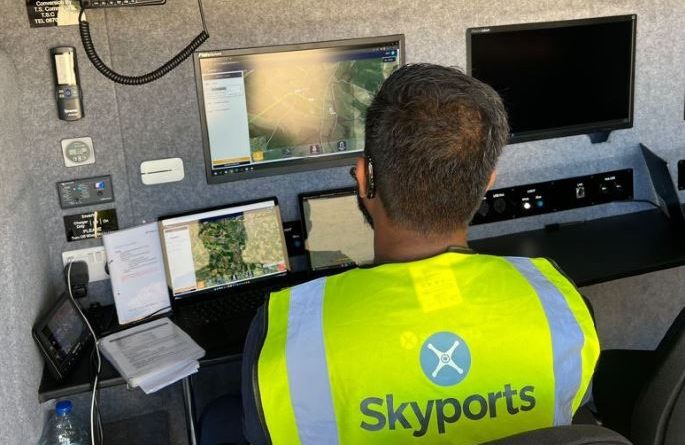What is the TindAIR project and how is Skyports Drone Services involved?
TindAIR is a two year project that started in 2021. It’s one of the EU-funded SESAR 2020 Joint Undertaking very-large-scale demonstrator projects and involves four demonstrations to test U-space deconfliction services in a live Urban Air Mobility Environment.
On a high level, TindAIR is about airspace integration; we’re demonstrating how Uncrewed Aircraft Systems (UAS) and crewed aircraft can safely co-exist in the same airspace in an integrated manner.
What are the priorities for the project?
A focus area for TindAIR is tactical deconfliction services, one of the most needed U-space services. Urban areas are more complex to operate in, and to operate UAS at scale in urban airspace, we need U-space services – also known as Uncrewed Traffic Management (UTM) – that are capable of providing alerts for potential conflicts in a timely manner.
This project is developing the building blocks for those capabilities to understand how we can scale up operations. To enable this, we’re establishing a robust communication link between the drone operator, the UTM platform and the aircraft through which we can exchange instructions and telemetry to safely and efficiently deconflict with different crewed and uncrewed aircraft types.
How is Skyports involved in the project – and who are the other partners?
Our contributions to the project are two-fold. Firstly, we are one of the project’s four drone operators. Skyports is one of the only operators in Europe that has a light UAS operator certificate (LUC) which facilitates the attainment of operational authorisations throughout the EU. Being able to leverage our vast operating experience across multiple geographies helps demonstrate to the regulator that our processes and procedures meet the standard that’s required for operating in an urban environment for a project like TindAIR.
A second contribution – and output – of this project is our capability to develop a Concept of Operations (ConOps) for a complex operating environment that can get approval by the regulator.

What has the project achieved so far and why is it so influential?
As of August 2022, we’ve completed our first set of beyond visual line of sight (BVLOS) test flights. In this first round of extensive testing, we successfully demonstrated integration with some of our UTM project partners.
The first set of tests saw us fly two of our aircraft on a reciprocal route during which they passed each other in mid-flight, demonstrating the capabilities of the UTM platform. This is the first time this has been done, so it’s a key milestone for us, the project, and the industry. We also demonstrated that multiple aircraft can operate in the same airspace at the same time and that we have the capabilities to safely manage such scenarios.
What is the significance of the TindAIR project in Europe and elsewhere?
As more operators enter the market and new use cases for UAS are unlocked, the skies will get busier. The time to find an efficient way to deconflict with other airspace users is now – before demand grows. That way, we can ensure our airspace regulations are always ahead of the curve, rather than playing catch-up.
Learnings from this project will be relevant for the whole industry across the world, not just for flights within Europe.
What are the next steps?
The next step is to demonstrate so-called emergency deconfliction scenarios. This is an important step for thoroughly testing our capabilities and ensuring we have a robust system in place for all events.
From a technology perspective, what do you consider the greatest challenge to implementing drone services at scale?
The biggest challenge currently is the effort that’s required to integrate with each of the different UTM platforms for the various projects that we’re involved in. The industry is not yet at the stage where each platform and tool speak the same language, so there is a need for standardisation. Ensuring every player across the ecosystem is on the same page, particularly on the larger-scale projects, will help to pave the way for scalable operations.
The European drone services landscape is at an incredibly exciting stage. Since the start of this project in 2021, there has been a huge uptick in regulatory activity across the region which will quickly enable drone services. We’re on track to operating scalable, commercialised BVLOS drone services in the very near future.

Learn more https://skyportsdroneservices.com/




